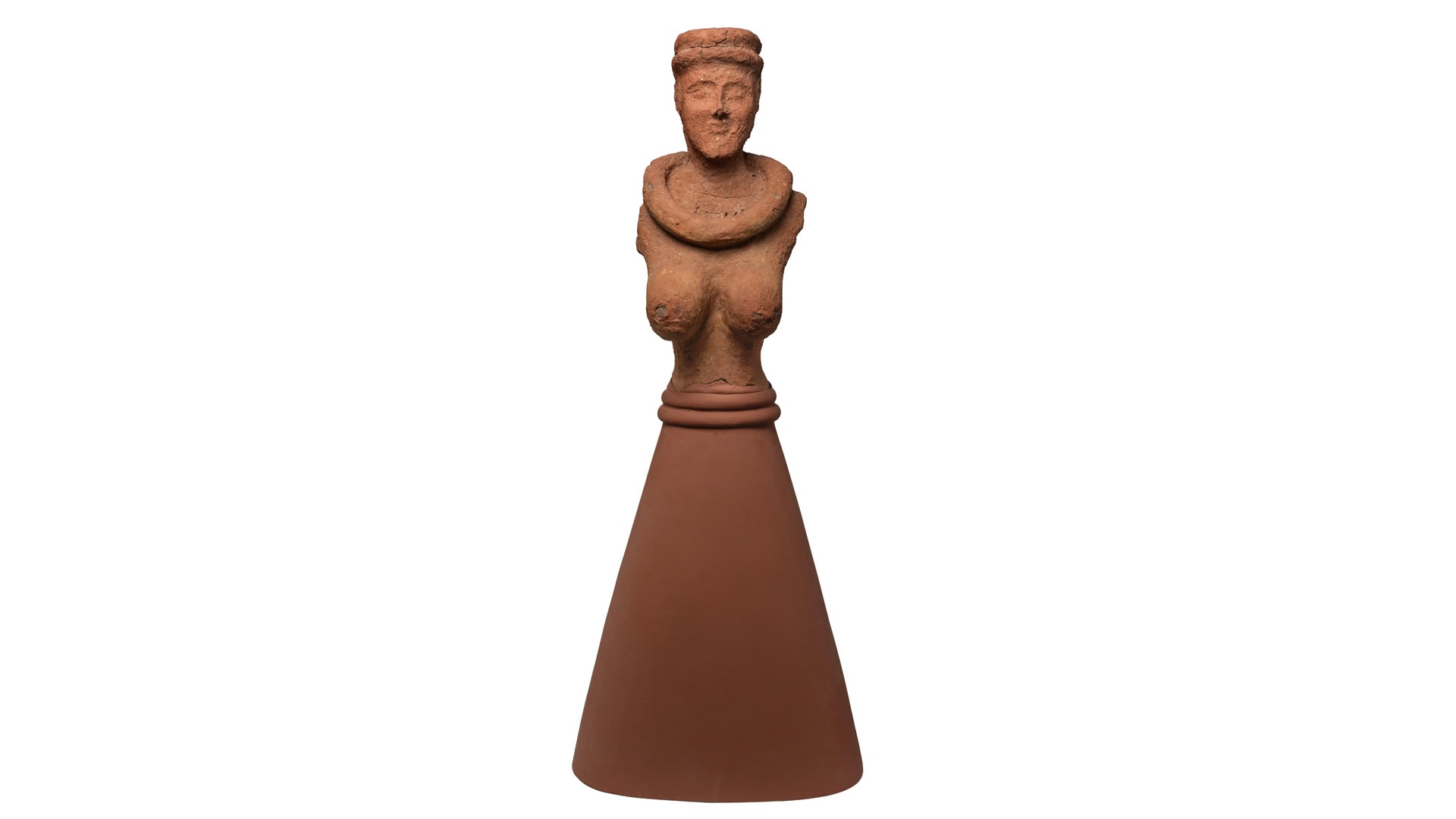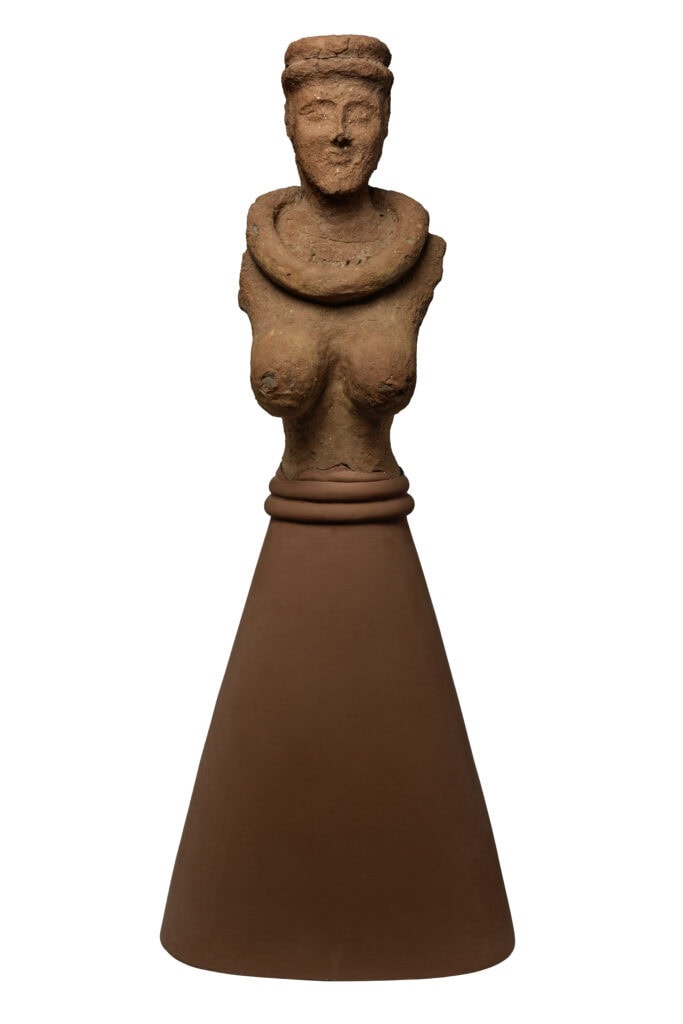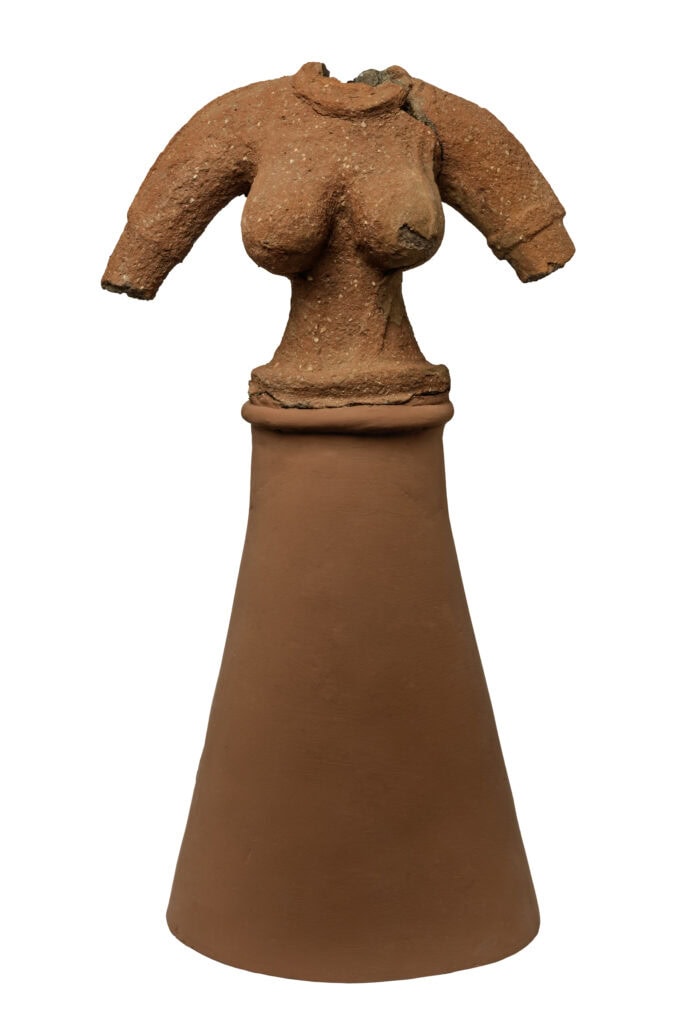Korai of Kea

The terracotta statues of women from the sanctuary of the Agia Irini settlement in Kea preserve through time the cult of the goddess to whom they were dedicated.
The prehistoric settlement of Hagia Eirene in Kea, which dates back to the 15th century BC, was excavated during the 1960s and the 1970s and constitutes, alongside Akrotiri on Santorini and Phylakopi on Melos, a point of reference for the study of the prehistoric Aegean, reflecting a dynamic society with strong ties with the Aegean, Minoan Crete, but also mainland Greece.
The Korai of Kea, together with at least 32 other statues, came to light in different areas of the temple. They all depict female figures clad in a garment that covers the torso leaving the breasts exposed, and loose skirt, while their hair is long. They extend their arms downwards, touching the waist, whereas some of them feature a garland around the neck. Based on the preserved traces, they would have been painted with vibrant colours.
The posture of the statues, with the heads held upright, the erect torsos, the stretched arms towards the skirts, and the garlands around the necks creates the vivid impression that the maidens dance at the celebration of the goddess’s epiphany, echoing the Minoan and Mycenaean iconography.

